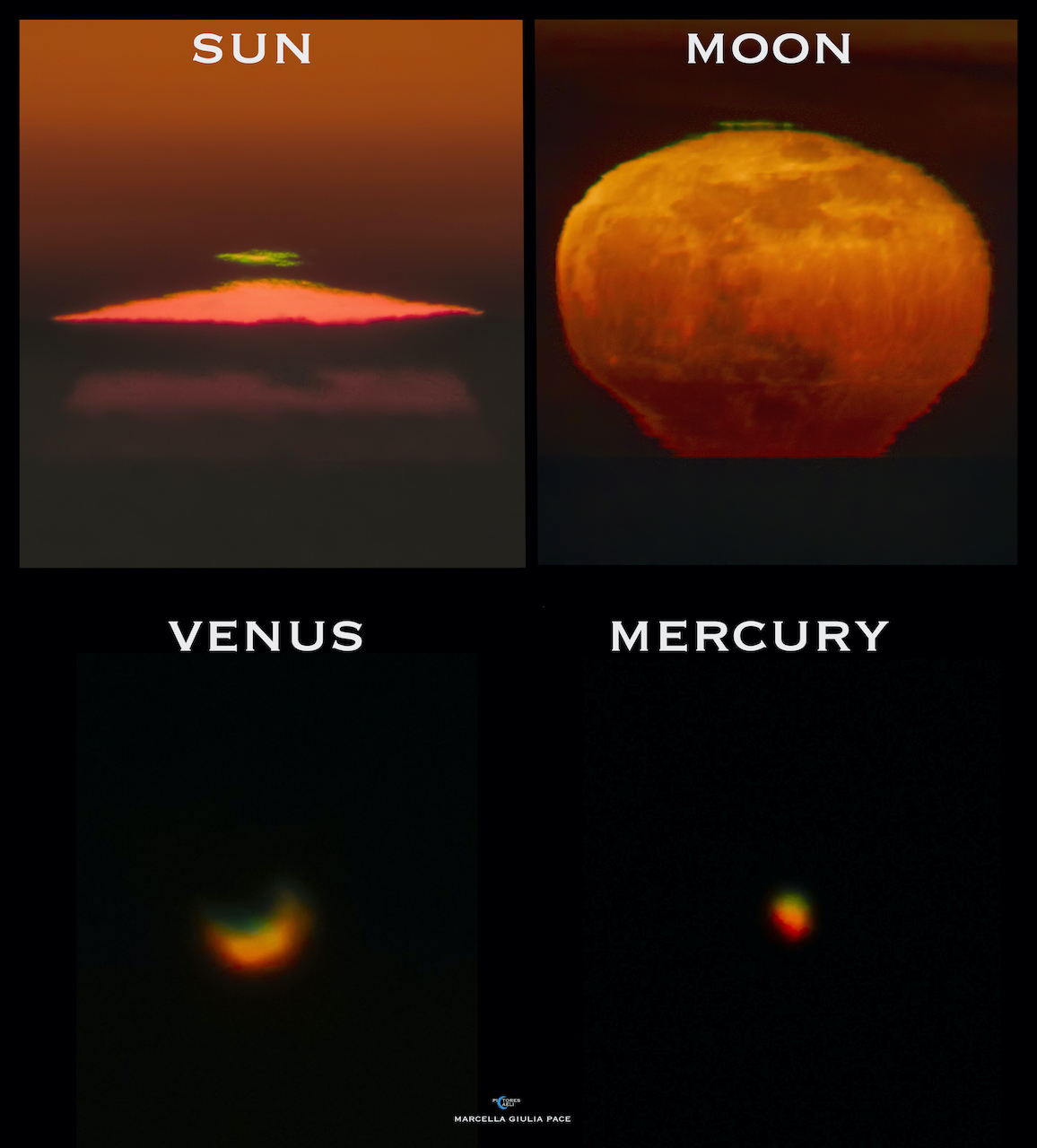2020 May 30
Green Flashes: Sun, Moon, Venus, Mercury
Image Credit & Copyright: Marcella Giulia Pace
Explanation: Follow a sunset on a clear day against a distant horizon and you might glimpse green just as the Sun disappears from view. The green flash is caused by refraction of light rays traveling to the eye over a long path through the atmosphere. Shorter wavelengths refract more strongly than longer redder wavelengths and the separation of colors lends a green hue to the last visible vestige of the solar disk. It’s harder to see a green flash from the Moon, not to mention the diminutive disks of Venus and Mercury. But a telescope or telephoto lens and camera can help catch this tantalizing result of atmospheric refraction when the celestial bodies are near the horizon. From Sicily, the top panels were recorded on March 18, 2019 for the Sun and May 8, 2020 for the Moon. Also from the Mediterranean island, the bottom panels were shot during the twilight apparition of Venus and Mercury near the western horizon on May 24.
Tomorrow’s picture: green arches
太阳、月亮、金星及水星的绿闪
影像提供与版权: Marcella Giulia Pace
说明: 在清朗的日落黄昏时,如果沿着低平的远方地平线看,你或许能在太阳隐没的瞬间看见一抹绿闪。其成因是在那瞬间,阳光受到视线方向的大气之折射所致。其中,较短波长的光受到的的折射,大于较长较红的光,因此把阳光解析成各种色光,也让日盘消失前的最后一瞥带着泛绿的色泽。而要见到月亮的绿闪较难,更别说是盘面极小的金星和水星了。不过,搭备望远镜或长焦镜头的相机,让捕捉天体在地平线附近时,因大气折射造成的这种迷人景观容易不少。这些在地中海.西西里岛记录的影像里,上排是2019年3月18日的太阳和2020年5月8日的月亮,下排则是摄于2020年5月24日、黄昏西方地平线附近的金星和水星。
明日的图片: green arches



